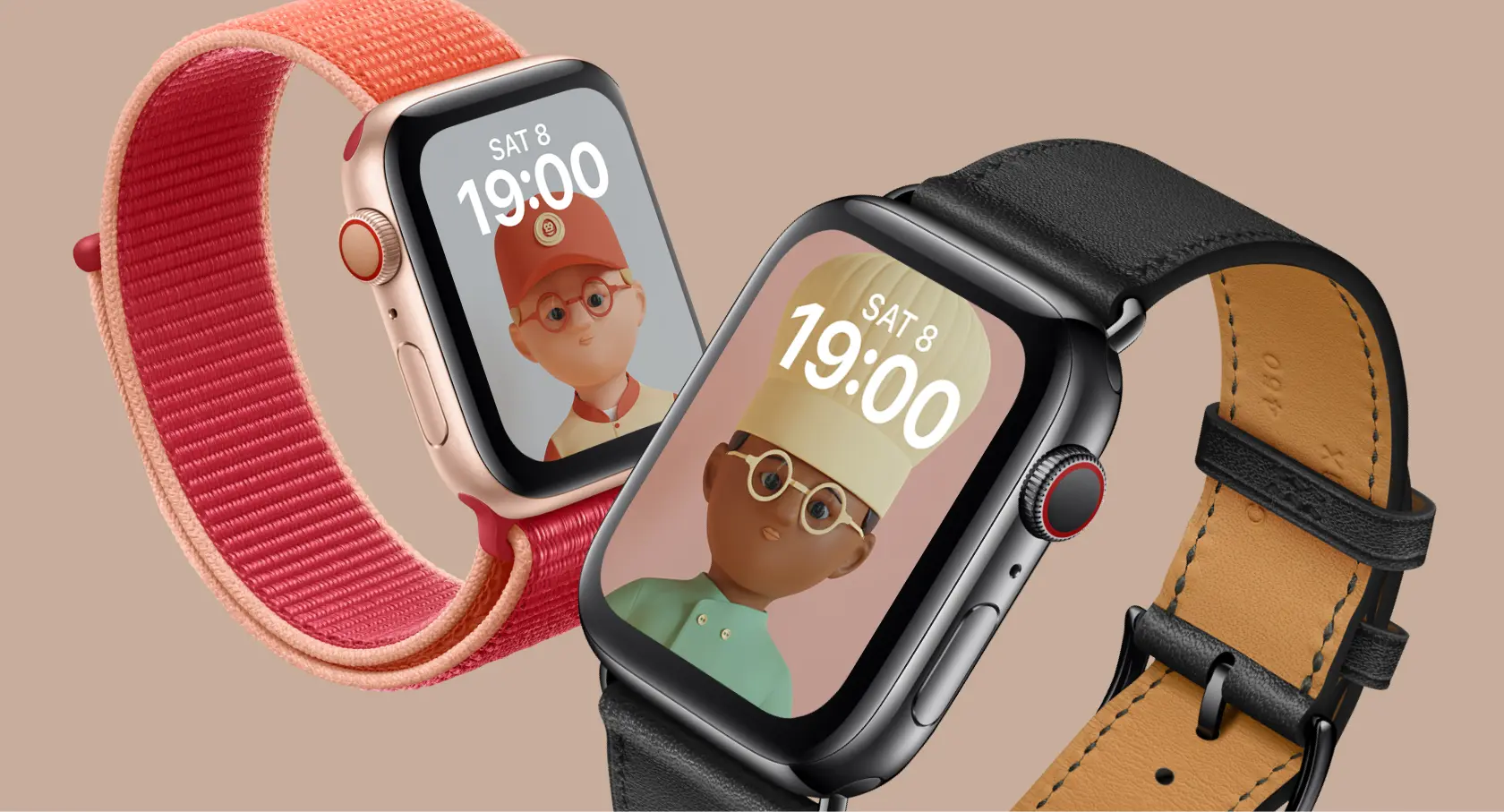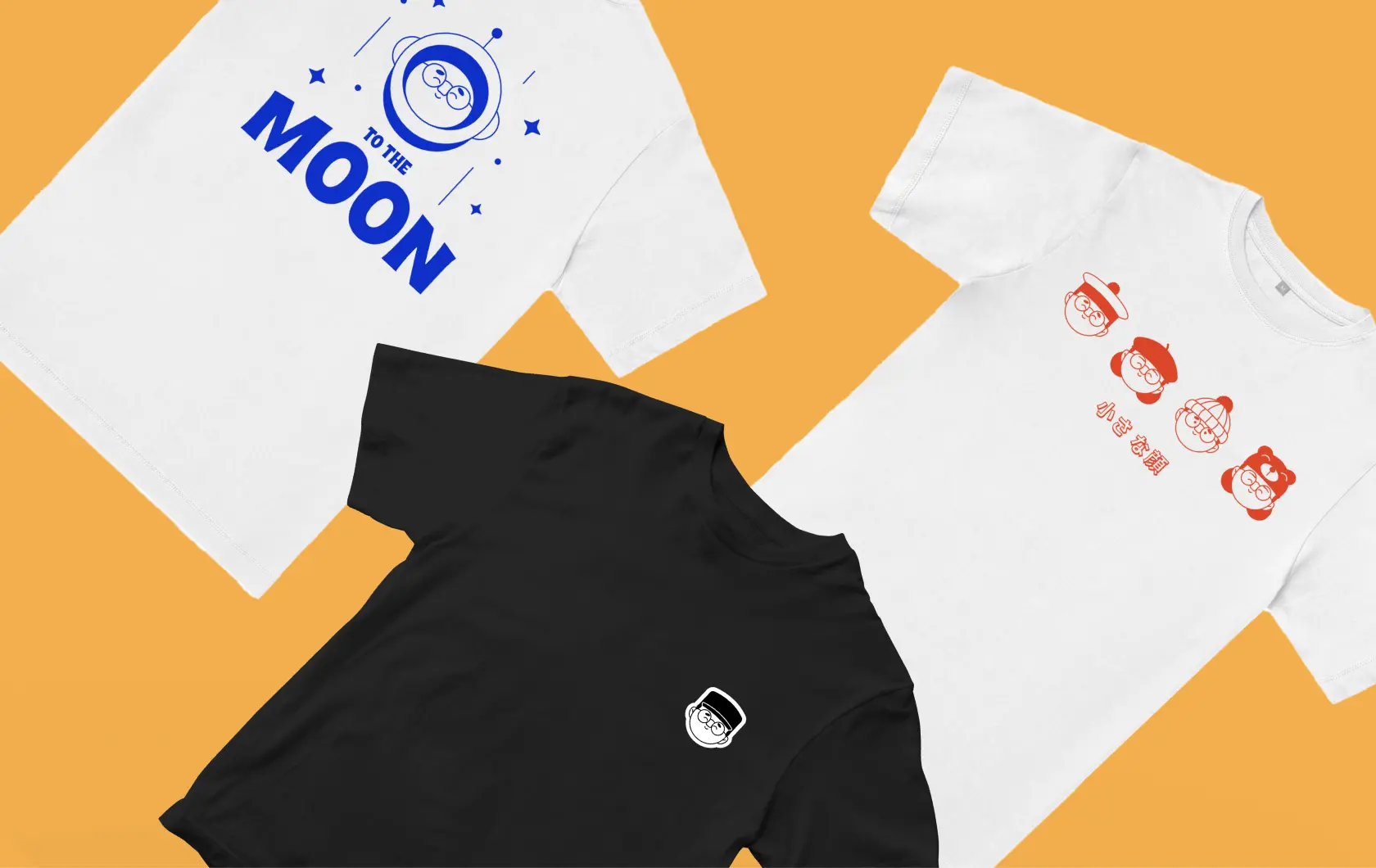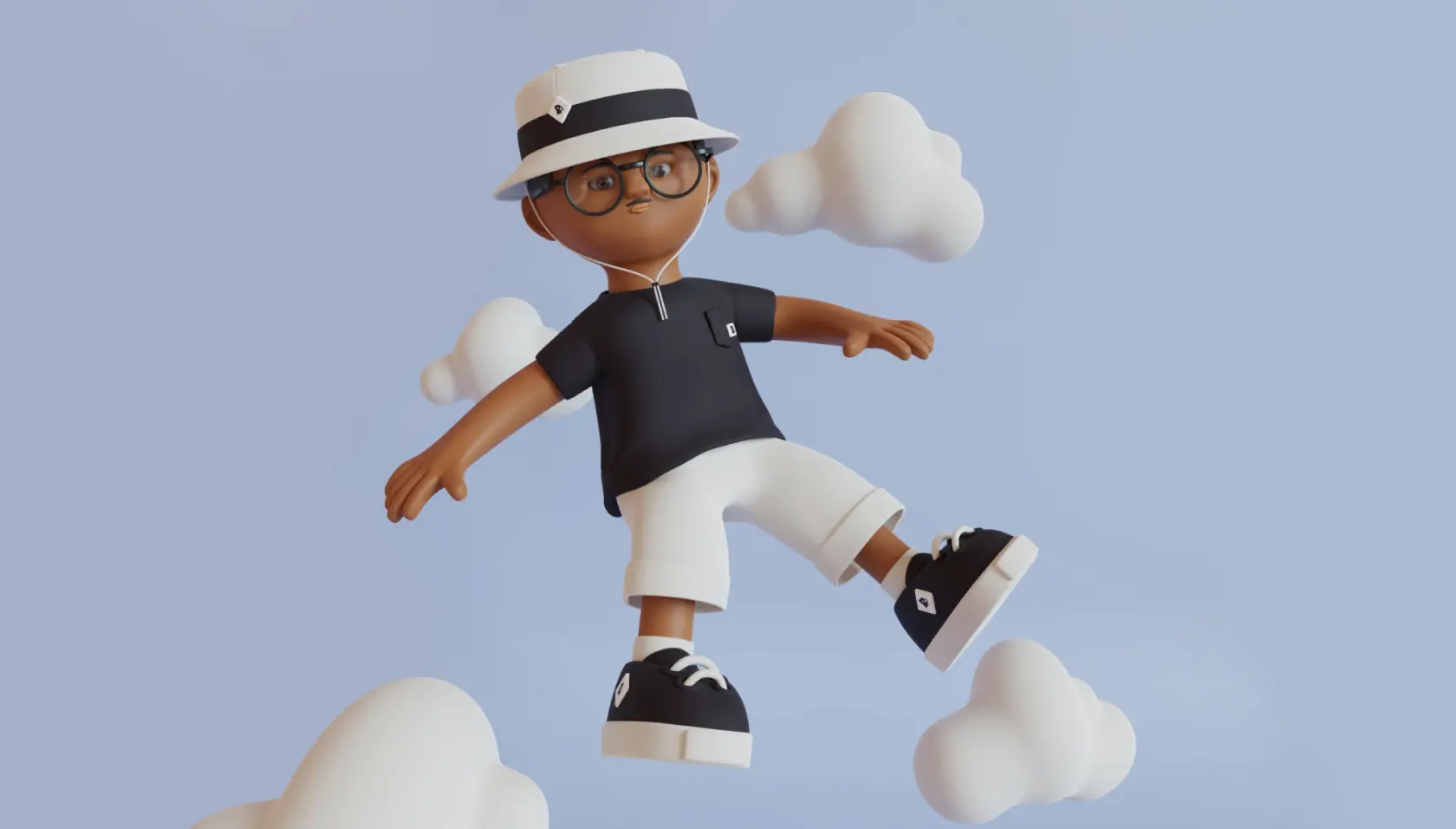The impossible task of a NFT artist
In a recent post, I touched on the unexpected success of TinyFaces NFT, a project born from my early experiments with 3D art in Blender. As someone who had never sold any art before, the sudden popularity of TinyFaces NFT caught me off guard, presenting me with an intriguing conundrum: what should I do next?
Unlike many NFT projects that boast ambitious, often unrealistic, roadmaps (road ruse) – think creating games, movies, or offering exclusive access to concerts – TinyFaces NFT started without any roadmap. It was an unplanned journey. This absence of a roadmap initially seemed like a shortcoming, especially when compared to the grand promises of others. However, these overly ambitious roadmaps often felt disingenuous to me, almost like false advertising.
This led me to question the underlying expectations of the NFT community. Is the appeal of NFTs really about the ambitious projects and perks promised, or is it primarily about owning a unique piece of art? As the creator of TinyFaces NFT, I find myself pondering the true essence of what we're offering and what our community truly values.
Navigating the Drop in NFT Floor Prices
The rapid uptake of TinyFaces NFT brought to light a fundamental aspect of the NFT space: the driving force for many is financial gain, akin to trading stocks. In this world, the key to maintaining value is preventing sales while simultaneously increasing demand and price, enticing more buyers.
Where many participants are looking for quick profits they are also scared of losses. These 'flippers,' as they're known, are quick to sell off their NFTs at the slightest hint of a dip in the floor price. This exact scenario unfolded with TinyFaces NFT. Once everyone had their piece of the collection, the floor price began to waver, triggering a sell-off.
Amidst this frenzy, I found myself unexpectedly at the center of criticism. Despite my focus on creating art rather than selling an overhyped roadmap, the community's dissatisfaction turned towards me when the value of TinyFaces NFT began to decline. This reaction highlighted a stark reality in the NFT world: the artist, often seen as the visionary behind the work, can also inadvertently become the scapegoat in the volatile dance of market dynamics.
Understanding Wash Sales in NFTs
In my quest to navigate the challenges of TinyFaces NFT's fluctuating floor price, I delved into the practices of other projects. What I discovered was a concerning trend: many were engaging in illegal wash sales to artificially inflate their NFT prices. This deceptive tactic led buyers to believe they were investing in the next big thing, or 'blue chip' NFTs, only to find themselves holding greatly overvalued assets when the scheme collapsed. A notable example of the consequences of such practices is the federal class action lawsuit against Logan Paul because of the CryptoZoo scam.
Today, there's a widespread consensus about the issue of wash sales in the NFT space. Advanced algorithms designed to detect such activities estimate that a staggering 30-50% of NFT transactions back then were wash sales. Even esteemed projects like CryptoPunks are suspected of engaging in this dubious practice, with a single NFT selling for $532 million being claimed to be a wash sale.
In response, crypto exchanges have started requiring the reporting of crypto wallet identities to governments, aiding in the crackdown on unscrupulous NFT artists.
Faced with my own project's declining floor price, I was determined not to resort to these deceptive tactics. The dilemma then was: what legitimate steps could I take? Creating a realistic roadmap seemed like a plausible solution but it wasn't something that would turn the floor price around. What they expected was going to the moon, something that's not possible with limited resources. As I've discussed in another blog post, the unpredictable nature of taxes for creators compounds this challenge. Even with a considerable budget, like $250,000, hiring just a couple of top-notch talents for a year could potentially run the project into the ground.
Post-Mint Marketing Strategies for NFT Artists
Confronted with TinyFaces NFT's challenges, some suggested I launch massive marketing campaigns, including TV ads, billboards, and social media blitzes, potentially engaging an agency to manage it. However, traditional media advertising, especially in high-traffic areas like the London Tube, can be prohibitively expensive. For example, a billboard campaign with significant visibility in such a location could cost around $60,000 a month. Given the niche nature of NFTs, most passersby might not even grasp the concept, making this a potentially wasteful expenditure.
From my early career experience in a communication agency, I've learned that effective marketing hinges on having a product that people genuinely desire. In the NFT realm that's for many who criticized me a NFT they could sell at a higher value later. The only way to achieve that was by resorting to dishonest and unlawful methods such as wash sales, which I wanted to avoid.
Realizing that a fresh strategy was necessary, I turned to studying other successful projects in the NFT space. However, comprehending the intricacies of the NFT market proved to be a complex task. The market's saturation, coupled with the misleading impact of wash sales, made it challenging to discern effective strategies from mere market manipulations.
Adding another NFT collection like a TinyPet to my portfolio didn't seem like a viable solution either. Such a move could potentially undermine the value of my existing work. More importantly, it felt akin to taking advantage of my audience, which went against my principles. I was committed to finding a path that respected the value of my current work and the trust of my followers.
Innovative Approaches for NFT Artists in a Dynamic Market
In my search for a way forward with TinyFaces NFT, I was unsure of the best path but resolute in my desire to expand my creativity and showcase my artwork.
This led me to develop a yearbook page on my website, where all the artworks were accessible for everyone to view.
To enhance this experience, I dedicated days to rendering all my 3D art in a higher resolution again, enabling people to use them as wallpapers for their phones, watches, or desktops.

I ventured into creating unique passports for each character in my collection. Additionally, I delved into the world of Instagram filters, importing the hats from my characters, allowing users to virtually 'wear' them.
I created lottery-based smart contract for TinyFaces NFT holders where they could win a TinyFaces NFTs Celebrity. This initiative aimed to create excitement and engagement within the community by introducing the element of chance and the allure of unique artwork.
To further engage the community, I developed a leaderboard system designed to recognize most avid TinyFaces NFT enthusiasts. This system tracked and highlighted fans based on their level of interaction across various platforms, including Twitter, Discord, and NFT marketplaces.
However, by the time I started designing t-shirt artworks based on TinyFaces NFT, interest had waned significantly. I hesitated to encourage people to spend money on these t-shirts, aligning with my ethos of not exploiting my audience. I contemplated sending t-shirts as gifts, but the logistics were daunting. Mass production in one location was cost-effective, but it led to prohibitive shipping and customs fees, especially with a global fanbase. This complexity forced me to abandon these plans, despite the extensive effort put into the artwork.

I still believe there's potential in selling these t-shirts if interest in TinyFaces NFT grows. However, the current low demand makes this idea impractical for the time being. Utilizing Instagram filters to project the designs onto t-shirts could be a novel approach for now, allowing fans to 'wear' the art without buying a physical product.
Analyzing the Rapid Market Shifts in the NFT Industry
Despite my best efforts to innovate and adapt with TinyFaces NFT, I couldn't help but feel a sense of defeat. My initiatives, though well-intentioned and creative, didn't achieve the desired impact. However, there was a silver lining: the wider community began to realize that the decline in NFT values wasn't solely the fault of creators. This understanding emerged as they witnessed similar trends across almost all NFT projects. Even the largest projects, which had invested hundreds of thousands of dollars in marketing campaigns, secured billboards in Times Square, and ventured into creating merchandise, were unable to stabilize or increase their floor prices.
The once-prestigious label of blue chip NFTs rapidly lost its significance as the market witnessed a dramatic devaluation of high-profile collections. Iconic NFTs like the Bored Ape Yacht Club, originally valued at $450,000, plummeted to just $77,000. Azuki, which were once sold for $79,000, saw their worth reduced to a mere $10,000. Even exquisite artworks from creators I deeply admire, such as the Invisible Friends series, originally priced at $24,000, faced a stark decline, now valued at only around $800.
This significant downturn in the market not only reflected the volatile nature of NFTs but also challenged the perceived stability and value of so-called 'blue chip' assets within this digital space.
The landscape of NFTs experienced a further setback when Twitter underwent a significant change. After its takeover, the platform's algorithm appeared to be modified to suppress NFT-related content. This development was part of a broader shift in perception and regulation of NFTs. Governments around the world began classifying NFTs as financial products, which led to other major social media platforms like Meta imposing restrictions on NFT advertising. This regulatory shift marked a new era for NFTs, one that posed additional challenges for creators and investors alike.
The debut of Dall-E in early 2021 introduced an additional layer of complexity to the NFT market. This AI-driven technology blurred the lines between manually created art and art generated through automation. Distinguishing between the two became increasingly challenging.
While Dall-E's emergence wasn't solely responsible for the NFT market's further decline, it certainly played a role in shifting public attention. Just as NFTs had once captured the spotlight as a groundbreaking technology, Dall-E now fascinated audiences with its capabilities. This shift in focus underscored how quickly technological advancements can redirect consumer interest and reshape markets, especially in the realm of digital art and innovation.
Expanding Horizons: Beyond the Traditional NFT Space
The evolving landscape of NFTs suggests a need to redefine success within this domain, shifting the focus from immediate monetary gains to long-term creative achievements. This perspective aligns NFTs more closely with traditional art forms. Just as one might purchase a print from a favorite illustrator, NFTs should be appreciated for their artistic value. The increase in value of an NFT should be driven by the continuous activity and evolution of the artist across various mediums, ought to be considered a measure of success instead of a minus or plus sign near the floor price.
Recent developments in the NFT world exemplify this shift. Pudgy Penguins, for instance, ventured into the creation of physical toys, bridging the gap between traditional and digital realms. Similarly, ClaynoSaurz expanded their universe by launching plushies. These initiatives represent tangible achievements, reflecting the creative potential of NFTs beyond just their floor prices and trading volumes, which are often subject to manipulation.
For TinyFaces NFT, envisioning a future that diverges from the typical NFT market dynamics seems essential. Instead of constantly worrying about the social dynamics around floor prices, a more sustainable approach would be to evolve TinyFaces NFT into a broader creative identity, akin to renowned creative brands like SUPERFICTION®. This shift would focus less on the fluctuating NFT market and more on building a distinctive, recognizable brand or identity.
Achieving this requires enhancing my skills and talents, particularly in areas such as 3D art and software like Blender. Expanding my knowledge in areas like rigging and animation will be crucial to make my characters more appealing. It's about reaching a level of quality and creativity that resonates more broadly, transcending the confines of the NFT space. This direction is not just about artistic evolution but also about redefining the value and appeal of TinyFaces NFT in a way that aligns with successful creative entities.
Rigging the NFT Characters
TinyFaces NFT originally began as a series of exploratory designs, with the characters not intended to be viewed from multiple angles. This initial approach led to the creation of 3D models that were somewhat limited in flexibility and not conducive to animation. So in the past weeks I have been exploring how I can reimagine my character as full body models that are can be seen from different angles. This development marks a significant evolution in the TinyFaces NFT project, as evidenced by a 360-degree model demonstration.
In addition to redesigning the models, I've dedicated the past few months taking courses at CGBoost to enhance my skills in rigging, a process as intricate and challenging as learning a new tool. Rigging, though complex, is incredibly rewarding; once mastered, it allows for dynamic positioning of characters in various poses.
While the rigging process for animation isn't perfect yet, I've shared a sneak peek on Twitter, showcasing the potential of these improvements. The preview features my rigged character set against a cloud backdrop, offering a glimpse into the exciting possibilities that lie ahead for TinyFaces NFT.

Conclusion
In conclusion, my experience with TinyFaces NFT has been an enlightening blend of artistic growth and challenges. Initially a simple 3D art project, it became a deep dive into the complex NFT world. Despite lacking a traditional roadmap, this allowed a focus on pure art and fan engagement rather than market hype.
The fluctuating NFT market highlighted the fragile balance between artistic vision and investor expectations. My response was to innovate with high-resolution artworks, unique digital passports, and interactive community initiatives, seeking to add creative value beyond mere floor price.
The evolving NFT landscape, shaped by technological advancements and regulatory changes, emphasizes the need for constant adaptation and innovation. Moving forward, the aim for TinyFaces NFT is to further develop in 3D art and animation, making characters more dynamic and versatile.
This journey is about more than floor price success; it's a commitment to creative exploration and redefining success in the NFT space. I'm excited to continue evolving as an artist and enriching the TinyFaces NFT art in this rapidly changing digital art world.